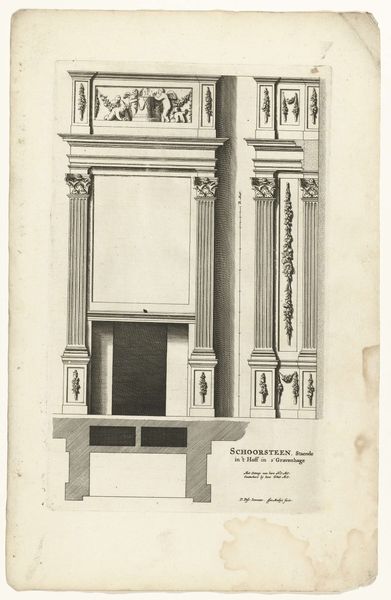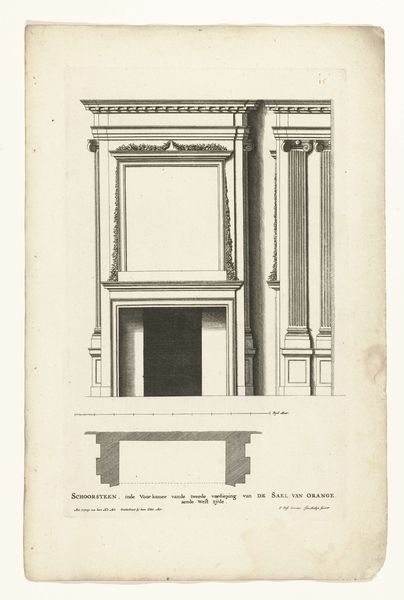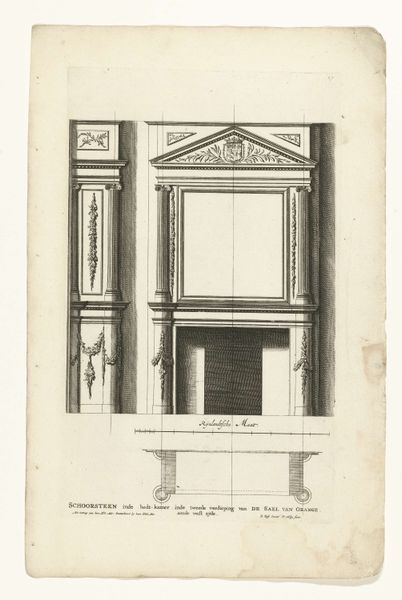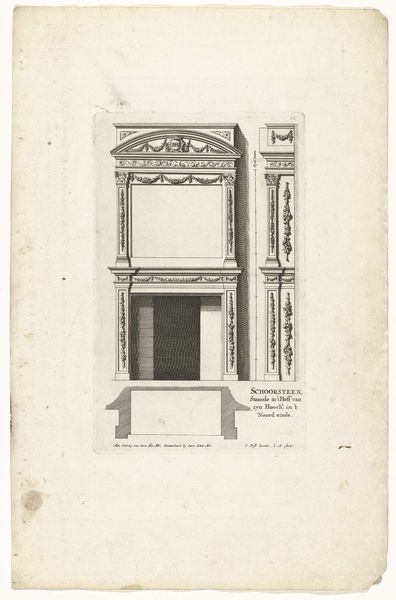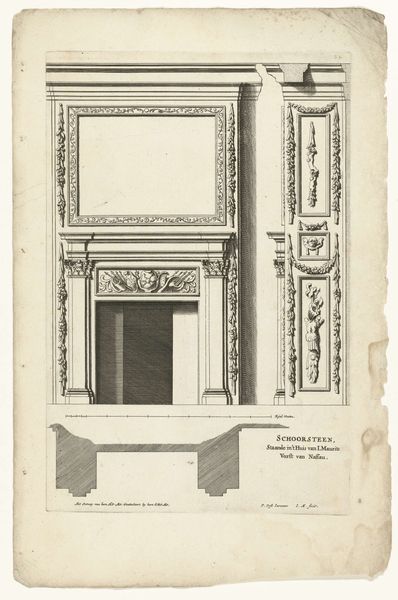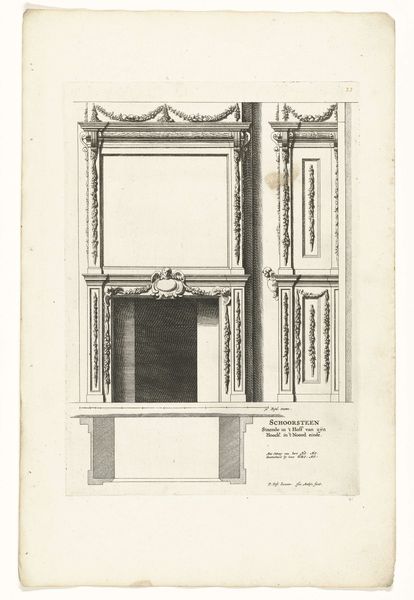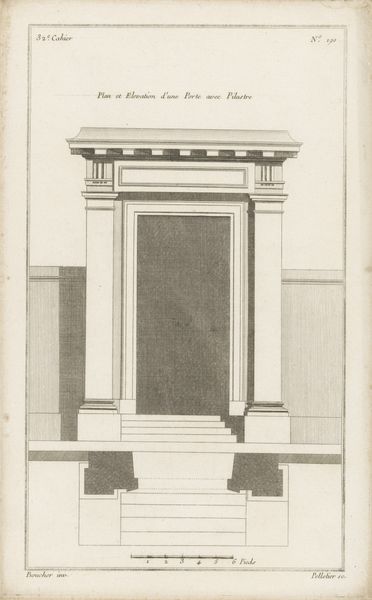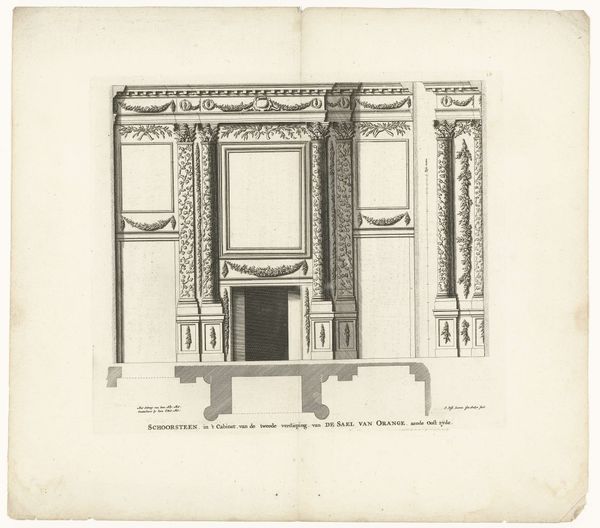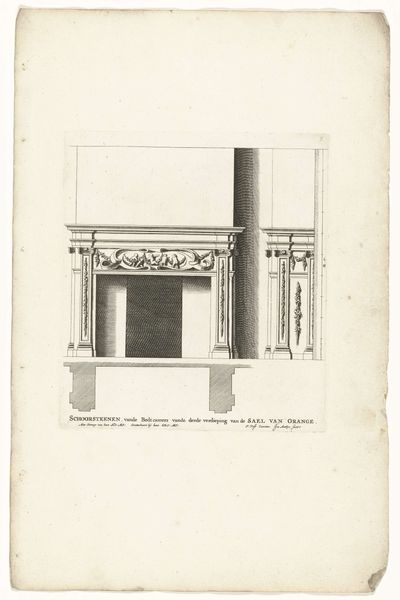
drawing, print, etching, engraving, architecture
#
drawing
#
baroque
# print
#
etching
#
etching
#
engraving
#
architecture
Dimensions: height 248 mm, width 171 mm
Copyright: Rijks Museum: Open Domain
Editor: So, here we have "Onderboezem in Paleis Noordeinde" by Jan Matthysz., created in 1664. It’s an etching, engraving, and drawing all rolled into one. It's rather austere, isn’t it? The details are intricate, but the stark lines give it a formal feel. What do you make of it? Curator: It speaks to a very specific moment in Dutch history, doesn’t it? 1664 – think of the Golden Age in full bloom. This isn't just a pretty picture; it’s a blueprint, a piece of a statement. Imagine it not just as ink on paper, but as a reflection of power, wealth, and aspiration. This wasn’t meant to be glanced at, then forgotten, it was a document, intended to dictate the very essence of an interior. Do you get that feeling of curated power from it, as well? Editor: Definitely. The symmetry screams order and control, and the fireplace and surrounding elements look so well-organized! What strikes me is how detailed the carving is despite it just being a drawing! What do you make of the lack of people? It feels...cold almost. Curator: Absence speaks volumes, doesn’t it? We're not looking at daily life. This isn’t a scene. The architecture IS the subject – an emblem, an aspiration. Maybe this very etching would've served as inspiration for similar fireplace designs to surface in neighboring houses. Editor: Ah, that makes perfect sense. So, it's less about domestic warmth and more about projecting status and taste? Curator: Precisely. Each precisely etched line reinforces not just the beauty, but also the permanence that Baroque Aristocrats would've favored. Editor: Wow, I hadn’t considered it that way. Thanks to you, this engraving transformed from a nice architectural study to a really profound glimpse into the values of the era! Curator: The beauty is in the layers, isn’t it?
Comments
No comments
Be the first to comment and join the conversation on the ultimate creative platform.
